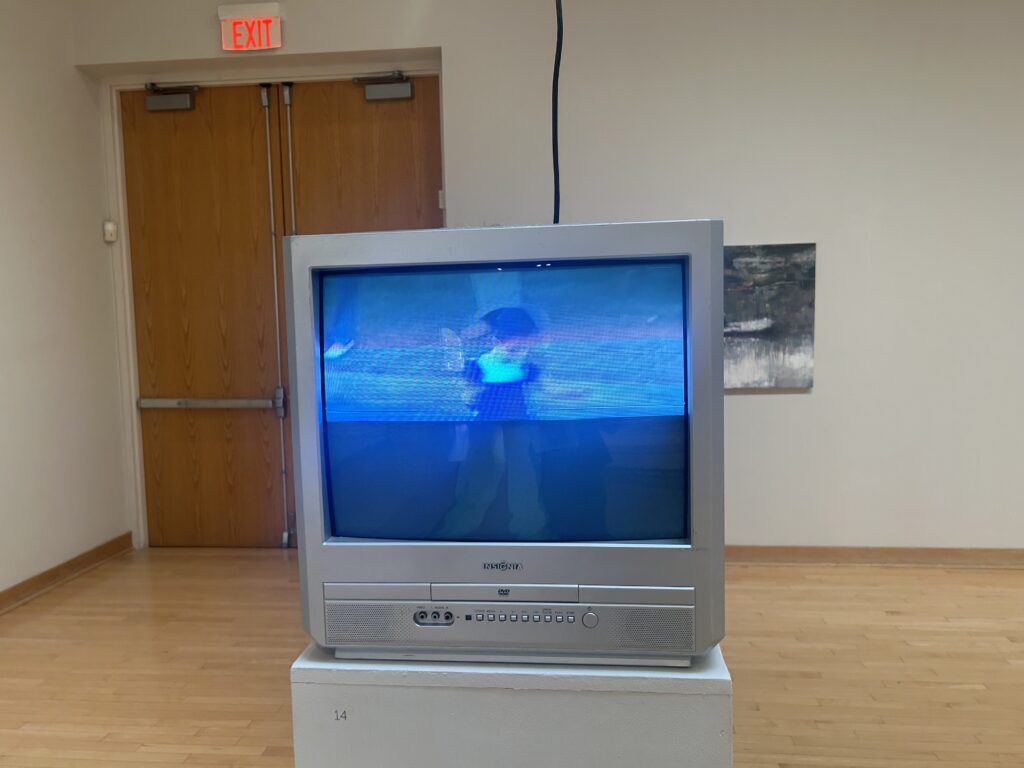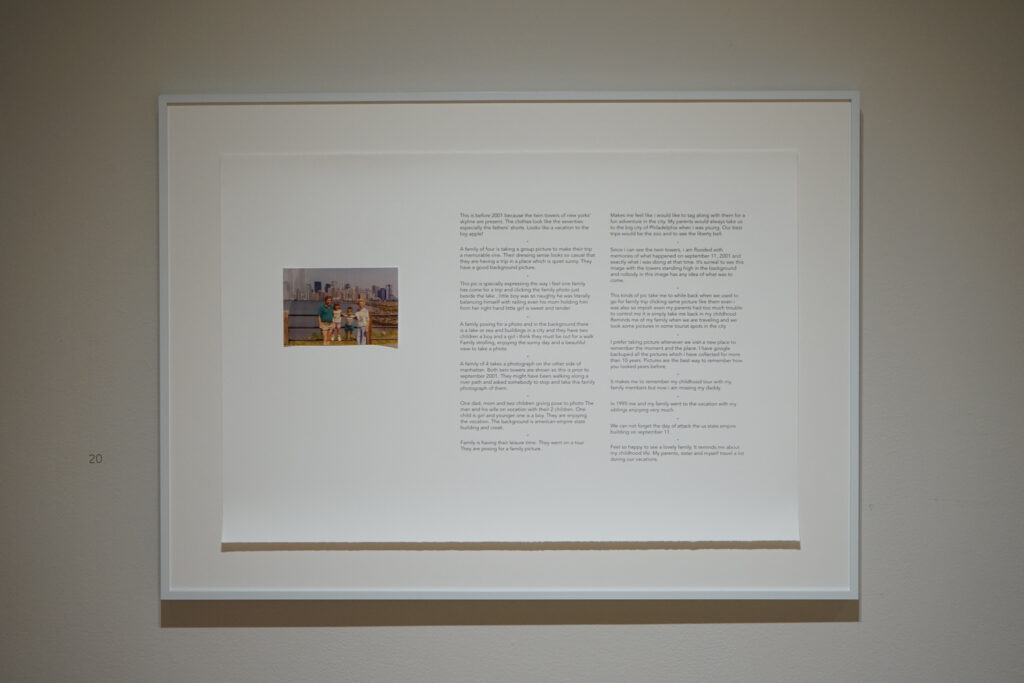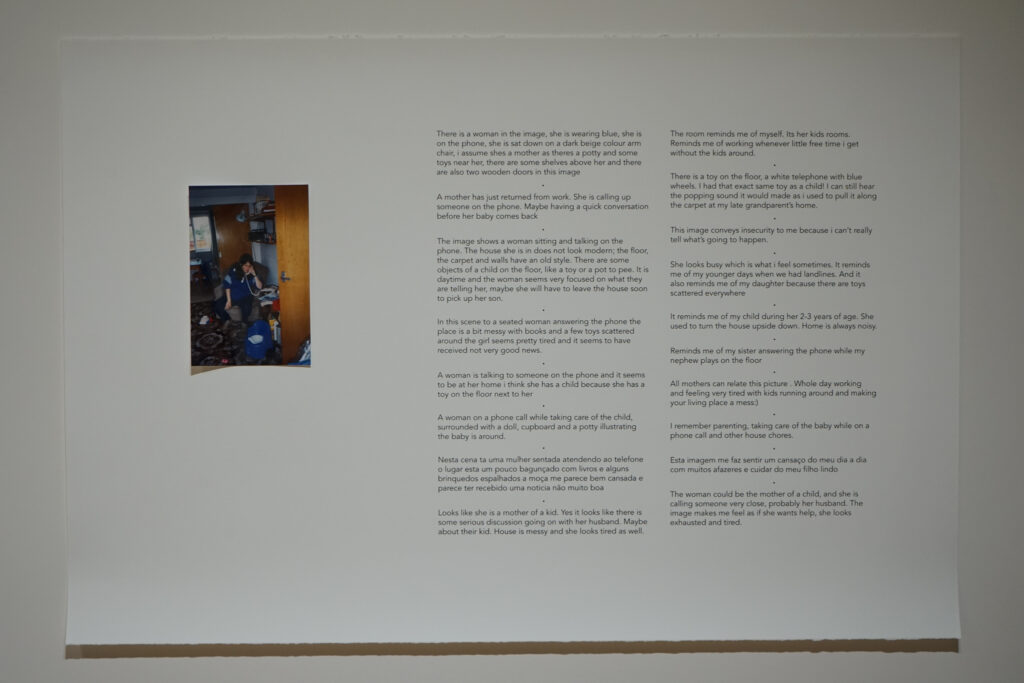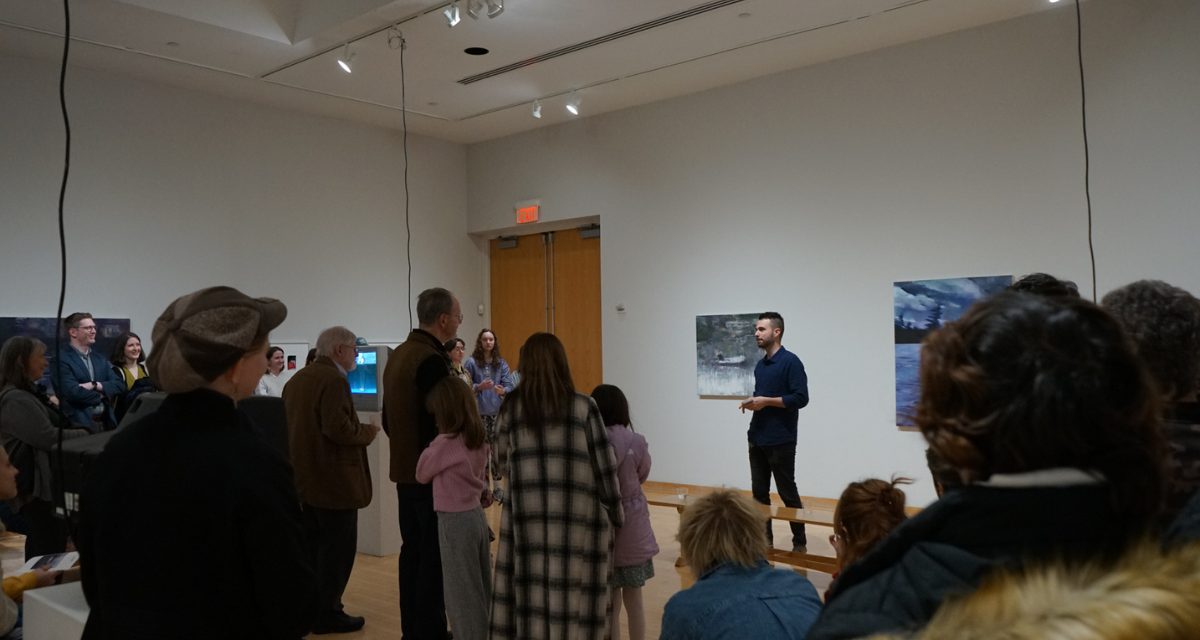Unveiling the Impact of AI on Art and Memory: Gregory Deddo’s Exhibition at Barrington
Many of us take more photos than we can remember, housing thousands of images on our phones. Zippia reports that at least 95 million photos and videos are posted on Instagram daily, which means that even if the average person only spent one second looking at each photo or video, it would still take them three years to go through one day’s worth of Instagram content. How do these photos and videos affect how we view ourselves and find our identity? Can artificial intelligence (AI) change the way we view images and ourselves? These are just some of the questions Gregory Deddo, professor of art at Gordon College, tackles in his exhibit “How the Morning Itself Appears,” on display until December 16 in the Gallery at Barrington Center for the Arts at Gordon College.
Photography as Pharmakon: The Cure and the Poison for Memory

A multitalented artist, Deddo’s exhibition includes pieces in a wide variety of mediums: paintings and photos on the gallery walls, videos on vintage TVs, embroidered tapestries hanging from the ceiling— and even AI. One video is of Deddo’s younger sister dancing, but he slowed the speed down, and the girl was erased and replaced in each frame with images from an AI image generator. The video piece, Little Girl Dancing, displayed on a 1999 Insignia 13” TV, has almost 2,000 unique AI figures.
Deddo’s piece questions the supposed objectivity of photos as raw data. “I think that there is something that gets lost in that,” Deddo says. “The meaning of the photograph is stripped out because the meaning exists in a lived space. AI takes all of that away and atomizes it.”
“AI often warps and distorts what the truth is. We believe in it because we believe it to be objective. But I think we need to talk about and think about what it’s actually saying about truth, reality, existence, all those things.”
Gregory Deddo
Illustrating the Use of Machine Learning in Art

For his photography piece All the Risks of Failed Comprehension, Deddo took inspiration from Amazon Mechanical Turk, which is used in the process of making AI tools to ask real human workers to objectively identify the things in a photograph. The workers’ annotations are then used for machine learning. Deddo used MTurk to ask workers to do the opposite—to subjectively infer what they thought was happening in photos of his family. Then he asked them to describe what the photo reminded them of in their own life.
“We reference our memories as a huge part of who we are,” Deddo says. “But our memories are fallible, they change and fade over time. So we try to rely on these technologies to sort of fix our memories. It’s both the cure for our faulty memories—it allows us to remember things that we wouldn’t otherwise remember—and it poisons our memories in the sense that we trust in the photograph and we don’t trust our own recollections.”
The Christian Response to Art and AI: Engage

Art is a way for Deddo to personally work out big questions about identity, memory and the place of AI in art in physical space. It also helps him think about his own faith. “My identity is not in my own understanding or in my own ability to create an archive of myself that doesn’t exist, like in my social media where I just take a bunch of pictures of myself. So where does it reside? To me, it would mean that it would have to reside in my dependence on God.”
Deddo hopes that visitors to the exhibit will fully engage with his art and the memories and thoughts it evokes in them. “Art is a place of asking questions and inviting other people into a conversation. My interest in engaging with AI in these pieces is because it allows for conversations. I think that’s the greatest potential of art—it changes your opinion about something.”
 The Bell
The Bell